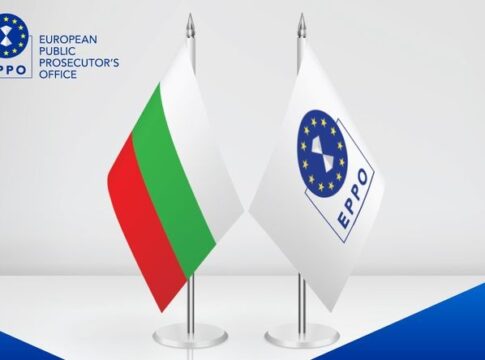Citibank Aims to Hit Net Zero Emissions with Carbon Credits
Citibank unveiled targets for reducing emissions linked to loans to coal mining, steel, auto, and real estate clients by 2030, while revealing its plan to buy carbon credits for its own operations.
Banks around the world are pledging to reduce carbon emissions for the sectors that emit the most carbon. And last year, Citi announced goals for its energy and power portfolios. The American major bank updated its plan to achieve net zero emissions by 2050.
Citibank said its clients need to use carbon credits while it will buy the credits to offset its own emissions.
Ending Fossil Fuel Financing
Fossil fuel financing from the world’s largest banks has amounted to $4.6 trillion in the 6 years since the 2015 Paris Agreement.
Some lenders are restricting financing for the dirtiest energy projects while others opted to totally end fossil fuel financing.
But environmentalists say they are not acting fast enough to prevent global temperatures from going beyond 1.5 degrees Celsius above pre-industrial times. It’s the level required to avoid the worst effects of climate change.
While other banks are tightening their climate lending policies in line with the Paris Accord, most of the large U.S. lenders continue to back expansion in the sector.
In fact, last year, three large American banks which include Citigroup slammed shareholders’ proposals to align lending with climate goals. The other two banks are Wells Fargo and Bank of America.
Citibank came second to JPMorgan Chase in fossil fuel funding from 2016 to 2021, with $285 billion worth of investment.
Citibank Carbon Emissions and Targets
Banks have different exposures to industries and their clients’ emissions disclosures are unclear and incomplete. So it’s quite hard to judge the lender’s plans for sectoral emissions reductions.
Add to this that banks are using varying base years for their targets. Some of them include underwriting while others don’t like Citibank.
Citi pledges to reach net zero emissions for operations by 2030 and net zero for financing by 2050. For its sectoral targets, the bank aims to cut absolute emissions from lending with these targets:
90% by 2030 from a 2021 baseline in thermal coal mining
31% intensity of emissions for auto manufacturing
41% for North American commercial real estate
Here is Citi’s 2030 emissions targets by sector.
CITI 2030 EMISSIONS REDUCTION TARGETS
The bank said it will reveal more detail on steel emissions and alignment with the Paris Agreement in the future.
Its targets cover direct financing but don’t include the underwriting of stock and bonds – called facilitated emissions. Citi said it will include it if the agreed methodology for all banks is out.
The bank’s emissions in 2021 for energy portfolio significantly declined versus 2020 but were the same for power. Comparison analysis between the sectors is not simple as financed emissions are constantly changing year-on-year.
Moreover, the bank stated in its climate financial disclosure report that:
“Climate-related reporting continues to fall short of the necessary quality, quantity and consistency to permit comparability across clients, industries and sectors, which underscores the necessity of client-level engagement.”
So, the lender’s approach is not to divest but to engage with clients. But for some campaign groups, the bank’s sectoral updates are disappointing when compared to European banks.
For example, Britain’s largest domestic bank Lloyds Bank decided to stop direct financing to fossil fuel projects. The finance giant said that it will not fund any new gas, oil, and coal projects to support the UK’s transition to a sustainable, low-carbon economy.
To reach its net zero emissions, Citibank intends to use carbon credits as one way to tackle unavoidable emissions.
Carbon Credits for Net Zero
Though the bank said it doesn’t plan to buy carbon credits to reach interim targets, it says some activities may not achieve absolute zero emissions by 2050.
So, Citibank looks to buy voluntary carbon credits for its 2030 net zero targets. The bank also said that some sectoral clients will need to use the credits to also achieve their absolute net zero emissions by 2050.
The lender will focus on credits that are additional, certified and restricted to carbon removals. But since removal tech remains costly at the present, the bank goes for nature-based removal credits.
For its operational emissions, Citibank sees the potential of carbon credits to address its Scope 1 emissions for 2022 and beyond. The bank is buying the credits to complement its 100% renewable electricity commitment.
As Citi approaches its 2030 operational target, it will continue to assess carbon removal credits to offset any remaining emissions.
The post Citibank Aims to Hit Net Zero Emissions with Carbon Credits appeared first on Carbon Credits.



